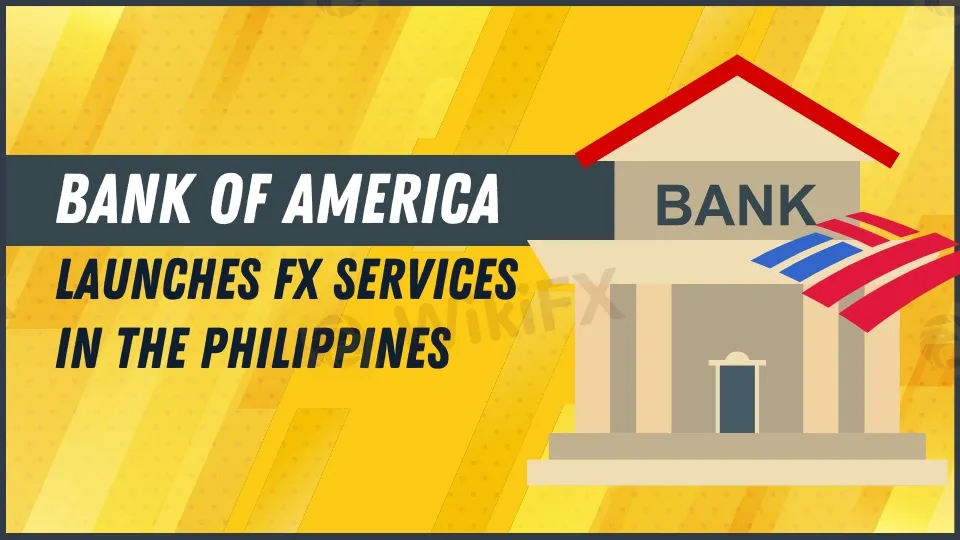Bank of America Launches FX Services in the Philippines
Abstract:Bank of America begins foreign exchange (FX) services in the Philippines, eyeing a share of the $300 billion onshore currency market. Learn about their growth plans.

Bank of America Eyes $300B Philippine FX Market
Bank of America has formally re-entered the Philippine foreign exchange (FX) market, with ambitious intentions to capture a piece of the Southeast Asian country's estimated $300 billion annual onshore currency sector.
“We do think we will be able to get a pretty good market share of that,” said Shah Jahan Abu Thahir, head of Southeast Asia Global Markets at Bank of America. Thahir, who is based in Singapore, stressed the potential for the country's FX market to expand. “We expect the nation's foreign exchange business to grow substantially over the next few years due to structural tailwinds driving further investments in the Philippines,” according to him.
Investment Fuels Growth
The resurrection of Bank of America's FX operations coincides with an increase in investment from global enterprises, outsourcing firms, and semiconductor manufacturers in the Philippines. The bank's Philippine country head, Vince Valdepeñas, emphasized the increased need for foreign currency services in these businesses.

This is a notable return for the US-based lender, which formerly provided FX and fixed-income services in the Philippines until the early 2000s before focussing on the American market.
Expansion Beyond FX: Fixed-Income Business
Bank of America is also planning to open a fixed-income business in Manila, first targeting international corporations and huge local businesses. This offering will eventually be extended to financial institutions like asset managers and insurers.
Bank of America brings the Philippines into line with its operations in neighboring Southeast Asian countries such as Singapore, Thailand, Indonesia, and Malaysia by offering services in fixed income, currencies, and commodities.
Economic Tailwinds Support Growth
The Philippine economy expanded by 6.3% in the second quarter of this year, boosted by increased consumer spending and the central bank's shift to monetary easing.
We perceive that the Philippine economy is performing nicely. Valdepeñas emphasized that this is a long-term investment as market liquidity increases.
Final Thoughts
The return of Bank of America to the Philippine FX market reflects increased confidence in the country's economic potential. With rising investment prospects and a steady growth rate, the Philippines provides an ideal ground for global financial firms to develop. This expansion not only benefits local sectors but also meshes with the country's larger drive for increased financial integration in Southeast Asia.

Read more

Participate Now in ForexCup Trading Championship
FXOpen announced the trading competition called ForexCup Trading Championship 2025 for traders. You can join, trade, and compete for exciting prizes. Here are the details

What the Movie Margin Call Taught Traders About Risk and Timing
The 2011 film Margin Call offers a gripping portrayal of the early hours of the 2008 financial crisis, set within a Wall Street investment firm. While the film is a fictionalised account, its lessons resonate strongly with traders and finance professionals. For one trader, watching the film had a lasting impact, shaping how they approached risk, decision-making, and the harsh realities of the financial world.

Why More Traders Are Turning to Proprietary Firms for Success
Over the past decade, one particular avenue has gained significant popularity: proprietary trading, or prop trading. As more traders seek to maximize their earning potential while managing risk, many are turning to proprietary firms for the resources, capital, and opportunities they offer. In this article, we’ll explore why an increasing number of traders are choosing proprietary trading firms as their preferred platform for success.

Day Trading Guide: Key Considerations
How does day trading balance freedom and precision in fast-moving markets? Learn key strategies to navigate risks and seize intraday opportunities effectively.
WikiFX Broker
Latest News
Fake ‘cyber fraud online complaint’ website Exposed!
Day Trading Guide: Key Considerations
NAGA Launches CryptoX: Zero Fees, 24/7 Crypto Trading
Scam Alert: 7 Brokers You Need to Avoid
AvaTrade Launches Advanced Automated Trading Tools AvaSocial and DupliTrade
What Determines Currency Prices?
Why More Traders Are Turning to Proprietary Firms for Success
How to Use an Economic Calendar in Forex Trading
MC Markets Review 2025
T4Trade Enhances Forex Trading with Advanced Tools for 2025
Rate Calc

